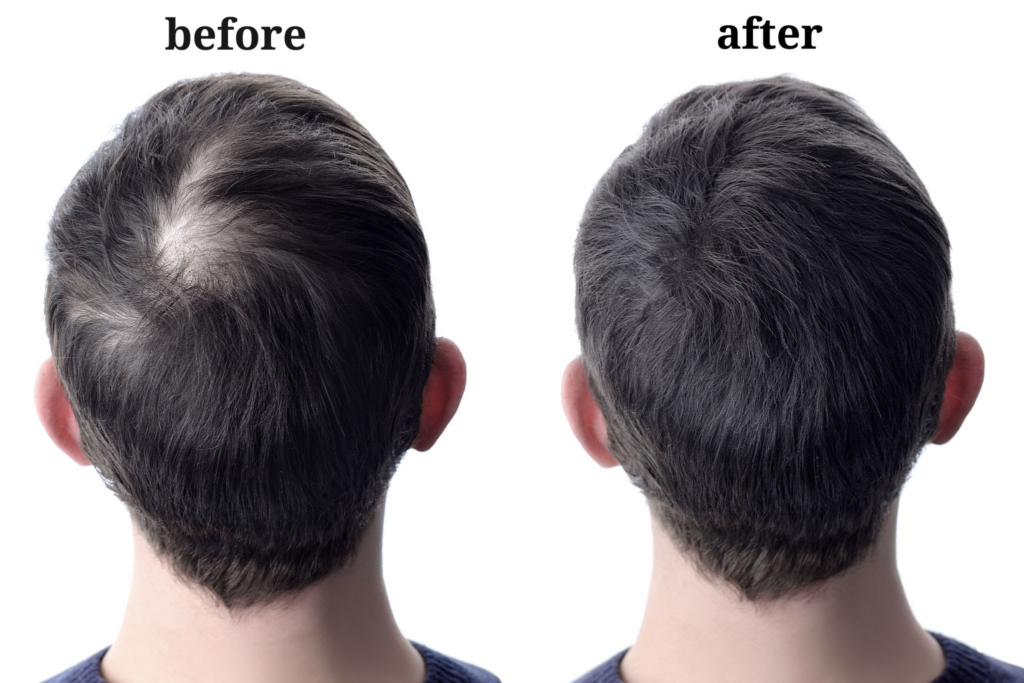Ever wondered when you’ll see the results of your hair transplant? It’s a natural question, and the answer hinges on the fascinating journey of transplanted hair follicles. Buckle up, because we’re about to delve into the Hair Transplant Results Timeline, unveiling the secrets of your new hairline’s grand unveiling.
İçindekiler
Unveiling Your New Hairline: A Hair Transplant Results Timeline Odyssey
Hair loss can be a frustrating journey, leading many to explore various hair loss treatments. While there are options like hair growth products, low-level laser therapy, or even scalp micropigmentation, a hair transplant offers a permanent solution for achieving a new hairline. But the big question remains: when will you see the results of your hair transplant?
This guide explores the fascinating Hair Transplant Results Timeline, shedding light on the growth cycle of transplanted follicles and the factors influencing the timeframe for your new hairline’s grand appearance.

Unveiling the Stages of Hair Transplant Growth: A Follicular Follicle’s Journey
The Hair Transplant Results Timeline can be broadly divided into distinct phases:
- The Shedding Phase (Weeks 1-8): This initial period might surprise you. Transplanted follicles may undergo temporary shedding, a natural response to the surgical intervention. Don’t fret! This doesn’t impact the long-term viability of the grafts.
- The Resting Phase (Weeks 8-12): Following the shedding phase, the transplanted follicles enter a period of dormancy, focusing their energy on establishing a robust foundation within the recipient area.
- The Growth Phase (Months 3-7): Get ready for some excitement! This is when the magic happens. Transplanted follicles kickstart the growth cycle, with new hair shafts emerging. Initially, these hairs might be fine and vellus-like, gradually thickening over time.
- The Maturation Phase (Months 12-18): Patience is key! It takes time for transplanted hair to fully mature and achieve its final caliber. By the 12-month mark, you’ll witness a significant increase in hair density and thickness, culminating in a natural-looking hairline at around 18 months.
Remember: This timeline serves as a general guideline. Individual experiences may vary depending on several factors we’ll explore next.
The Age Factor: Time Waits for No Man (or Hairline)
Age can influence the Hair Transplant Results Timeline. Younger patients (in their 20s and 30s) tend to experience faster hair growth due to more robust scalp health and a vigorous follicular unit donor area. Conversely, for patients with advanced hair loss or those undergoing transplants later in life (think 50s and beyond), the timeline might be slightly extended. However, with proper planning and a skilled surgeon, excellent results can still be achieved.
The Battlefield of Baldness: How Hair Loss Extent Impacts the Timeline
The extent of your hair loss plays a role in the Hair Transplant Results Timeline. Individuals with smaller balding areas may require fewer grafts, leading to a potentially faster timeline for seeing a complete new hairline. On the other hand, patients with significant hair loss might require a larger number of grafts, potentially extending the timeframe for achieving full density.
Donor Hair: The Unsung Hero of Your New Hairline
The quality of donor hair significantly impacts the Hair Transplant Results Timeline. Healthy donor follicles with strong growth potential translate to faster and more predictable hair regrowth in the recipient area. Techniques like Follicular Unit Extraction (FUE) prioritize the extraction of healthy follicular units, further optimizing the timeline for achieving your desired results.
The Recipient Area: Preparing the Ground for Hairline Glory
The health of the recipient area (scalp) is crucial for successful hair transplant results. Factors like adequate blood supply and sufficient scalp laxity (looseness) influence the timeline. A healthy scalp provides a fertile ground for transplanted follicles to thrive, potentially accelerating the growth process. Conversely, a compromised recipient area might necessitate additional measures to optimize the environment for transplanted hair, potentially impacting the timeframe.
Medications and Medical Conditions: A Balancing Act
Certain medications or medical conditions can influence the Hair Transplant Results Timeline. For instance, medications like blood thinners or specific medical conditions affecting wound healing might necessitate adjustments to the timeline to ensure optimal results. It’s important to have a transparent conversation with your doctor regarding any medications or conditions to determine their impact on the timeline.
Post-Operative Care: Nurturing Your New Hairline
Diligent post-operative care plays a vital role in optimizing the Hair Transplant Results Timeline. Following your surgeon’s instructions for wound care, minimizing scabbing, and maintaining proper scalp hygiene all contribute to a smooth healing process and potentially expedite the growth of transplanted follicles.
The X-Factors: Unforeseen Twists in the Hairline Tale
While the timeline provides a roadmap, unforeseen factors can occasionally influence the Hair Transplant Results Timeline. These might include individual variations in hair growth patterns or unexpected reactions to the surgery. However, an experienced hair transplant surgeon will consider these possibilities during the consultation and planning stages to minimize their impact on your timeline.

Embracing Your New Hairline: Living With Your Hair Transplant Results
Congratulations! You’ve reached the pinnacle of the Hair Transplant Results Timeline. You’re now sporting a fantastic new hairline, but the journey doesn’t end there. Here’s how to embrace your new hair and maximize its potential:
- Maintaining Healthy Habits: A healthy lifestyle – including a balanced diet, adequate sleep, and stress management – promotes overall well-being and can contribute to continued healthy hair growth.
- Hair Care Regimen: Develop a gentle hair care routine using sulfate-free shampoos and conditioners specifically formulated for hair transplants. Be mindful of brushing techniques to avoid damaging the newly transplanted hair.
- Sun Protection: Just like the rest of your skin, your scalp needs sun protection. Wear hats or use sunscreen formulated for the scalp to prevent sun damage, which can hinder hair growth.
- Realistic Expectations: Hair transplants offer permanent hair restoration, but they don’t stop the natural aging process. Continued hair loss in the non-transplanted areas might occur. Discuss future options like hair loss prevention medications or additional hair restoration surgery with your doctor if needed.
- Long-Term Monitoring: Schedule regular consultations with your hair transplant surgeon to monitor progress and address any concerns.
Living with your hair transplant results is about celebrating your newfound confidence and taking proactive steps to maintain a healthy scalp and flourishing hair.
Beyond the Hairline: Exploring Additional Hair Loss Solutions
Hair transplants are a powerful tool for achieving a new hairline, but they might not be the sole solution for everyone. Here are some additional options to consider in conjunction with your hair transplant or as standalone treatments:
- Hair Loss Medications: Medications like finasteride and minoxidil can help prevent further hair loss and potentially stimulate hair regrowth. Discuss these options with your doctor to determine their suitability for your specific hair loss pattern.
- Platelet-Rich Plasma (PRP) Therapy: This innovative treatment involves injecting concentrated platelets from your own blood into the scalp. PRP therapy is believed to stimulate hair growth and improve scalp health.
- Scalp Micropigmentation: This non-surgical technique involves creating the illusion of a thicker hairline or a fuller scalp using cosmetic tattooing techniques. It can be a valuable option for individuals with minimal hair loss or as a complementary treatment alongside a hair transplant.
Remember: Consulting with a qualified hair restoration specialist is crucial to determine the most suitable course of action for addressing your specific hair loss concerns. They can guide you through the various options available, including hair transplants, and create a personalized treatment plan to achieve your desired hair goals.
Conclusion
The wait for a flourishing new hairline can feel like an eternity, but understanding the Hair Transplant Results Timeline can ease your anticipation. Remember, patience is key! While this guide provides a general roadmap, individual experiences may vary. Factors like age, extent of hair loss, and quality of donor hair all influence the timeline. By consulting with a qualified hair transplant surgeon, you can create a personalized plan to optimize your Hair Transplant Results.
Ready to embark on your hair restoration journey and unveil your new hairline? Don’t hesitate to schedule a consultation with a hair transplant specialist today. They can address your specific concerns, answer your questions about the Hair Transplant Results Timeline, and guide you towards achieving the head of hair you’ve always desired.
Hairtrans.com was founded by world-famous plastic surgeon Dr. MFO, who is an expert in facial feminization or facial masculinization surgeries, and is managed under his leadership. Would you like to have a hair transplant under the coordination of a plastic surgeon with many years of experience?
Whether you are a trans woman or a natural born male or female, if you are looking for the best hair transplant, contact us now.


